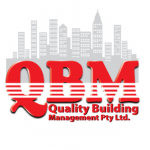A Strata Scheme Audit Explained
Financial audits uphold the age-old saying, “If a job’s worth doing, it’s worth doing well.”
A strata scheme audit is there to ensure the T’s get crossed and I’s dotted. They ensure the welfare of a building, comprising of several lots, is not put in jeopardy as a result of a lack of funds, fraudulence or careless forward planning.
So what’s the detail in the financial audit of a Strata scheme? Read on for the low-down.
Help! What Should I Know About a Strata Scheme Audit?
Much will depend on the property location. In Victoria and New South Wales, for example, an annual financial statement audit is compulsory for schemes with 100 lots and above.
In Queensland, annual audits are a requirement for all Body Corporate communities, except for two lot schemes in some instances. An independent auditor will carry out and complete the audit process. There are rules around the auditor’s appointment. For example, they must hold the relevant qualifications. Here’s what the audit sets out to achieve:
- An independent opinion on the veracity and fairness of a scheme’s financial affairs
- Flagging up to owners & strata managers, errors or potential compliance issues
- Alerting owners to any fraudulent or suspicious activity
- The encouragement of transparency for all stakeholders
- The maintenance of high record-keeping standards within the strata scheme
The strata audit examines the financial record of a body corporate over a specified period of time. The financial record typically means:
- The statement of expenditure and income that relate to administrative funds
- The statement of income and expenditure for the sinking fund
- The balance sheet of the legal entity
- A summary of accounting policies and relevant notes to the accounts
The Process for the Audit of the Strata Scheme
As a typical example, we’ve broken this down into 5 simple steps:
1. Preparation of the Financial Statements
The body corporate manager will get the relevant financial statements together on the body corporate committee’s behalf, ensuring they meet current rules. They will then present them to the appointed auditor.
2. Execution of the Audit Programme
Once the auditor assesses the internal controls of the body, the audit programme gets executed. The auditor may ask for certain documentation and confirmation notes from the accounts team.
3. Examination of Documents and Records
The auditor will check all the reports submitted along with supporting documents. They will pick up on any risky areas. The auditor may ask for further details or notes and proceed with more lines of inquiry.
4. The Results of the Audit
Depending on how the entire investigation goes, the auditor will make a decision on whether the financial statements of the body corporate provide a true and fair picture and whether they are compliant with current legislation.
5. Signing off the Audit
The auditor issues an official set of audited financial statements that contain their opinion about the accuracy of the financial records. These will then get presented to the owners and stakeholders.
All Body Corporates or Owners Corporations should be able to cover the costs of future capital expenses. That might include a budget for painting an entire building, driveway refurbishments, the replacement of common property fixtures such as carpets, roofing and guttering along with lift maintenance.
It’s vital for the security of owners and occupiers that there is a fail-safe plan or sinking fund for the future that will take care of all these kinds of issues.
Let Us Organise Your Sinking Fund
Quality Building Management are the experts in knowing all the considerations and dependencies that go into setting up a sinking fund. That includes managing the size of contributions and the best ways to collect them.
We’re also across all the ever-changing rules and regulations around strata schemes and insurance. Get a quote today from the experts for your sinking fund.






